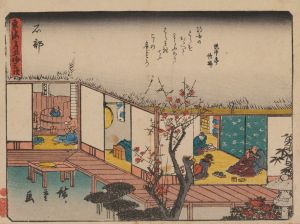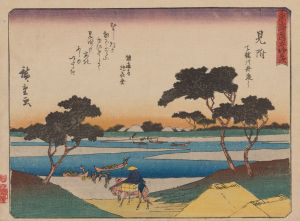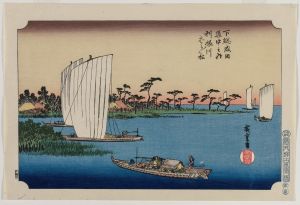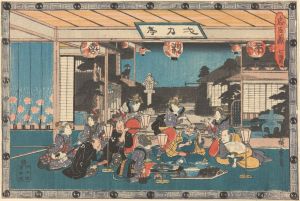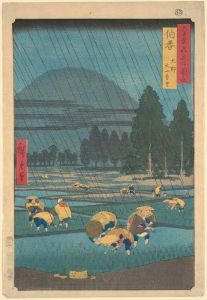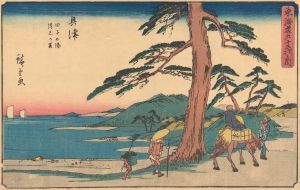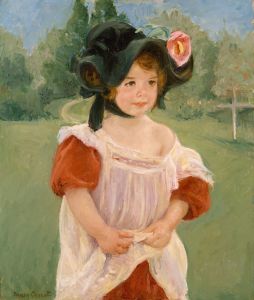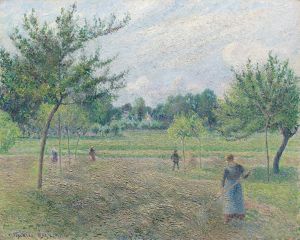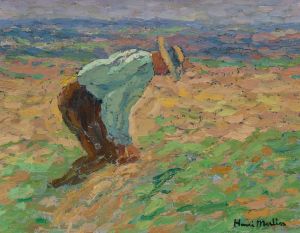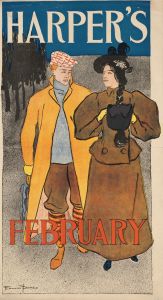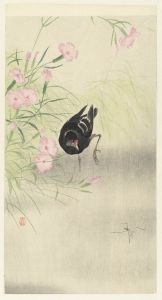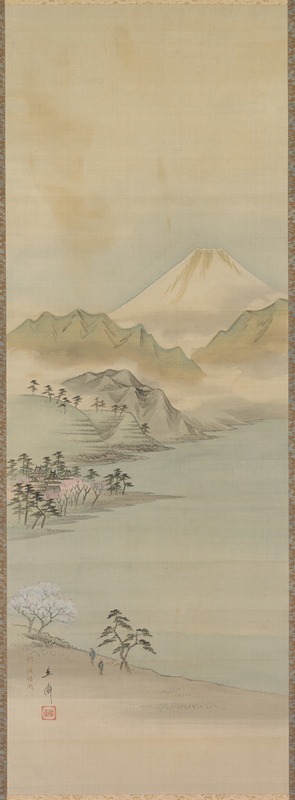
Lake Suwa
A hand-painted replica of Andō Hiroshige’s masterpiece Lake Suwa, meticulously crafted by professional artists to capture the true essence of the original. Each piece is created with museum-quality canvas and rare mineral pigments, carefully painted by experienced artists with delicate brushstrokes and rich, layered colors to perfectly recreate the texture of the original artwork. Unlike machine-printed reproductions, this hand-painted version brings the painting to life, infused with the artist’s emotions and skill in every stroke. Whether for personal collection or home decoration, it instantly elevates the artistic atmosphere of any space.
Andō Hiroshige, one of the most prominent ukiyo-e artists of the Edo period in Japan, is renowned for his landscape prints that capture the beauty of nature and everyday life. Among his celebrated works is "Lake Suwa," a woodblock print that forms part of his famous series The Sixty-nine Stations of the Kiso Kaidō (Kisokaidō Rokujūkyū-tsugi), created in collaboration with fellow artist Keisai Eisen. This series, produced between 1834 and 1835, depicts the post stations along the Kiso Kaidō, one of the five major routes of the Edo period connecting Edo (modern-day Tokyo) and Kyoto.
The print "Lake Suwa" specifically represents the area around Suwa-juku, one of the post stations along the Kiso Kaidō. Lake Suwa, located in present-day Nagano Prefecture, is a natural lake surrounded by mountains and known for its scenic beauty. Hiroshige’s depiction of the lake reflects his characteristic style, combining a keen observation of nature with a poetic sensibility. The composition typically features elements such as the lake’s tranquil waters, the surrounding landscape, and human activity, which together evoke a sense of harmony between people and their environment.
Hiroshige’s works, including "Lake Suwa," are celebrated for their use of perspective, vibrant yet subtle color palettes, and attention to atmospheric effects. His ability to capture seasonal changes and the interplay of light and shadow is evident in this print, as in many others. The series as a whole was highly influential, both in Japan and later in Europe, where it inspired Impressionist and Post-Impressionist artists such as Claude Monet and Vincent van Gogh.
As with much of Hiroshige’s work, "Lake Suwa" is not merely a literal representation of the landscape but also an artistic interpretation that conveys the mood and essence of the location. The print serves as both a visual record of the Edo period and a timeless piece of art that continues to be appreciated for its aesthetic and cultural significance.





